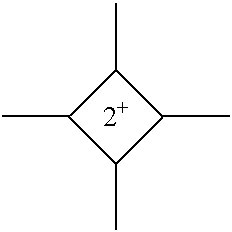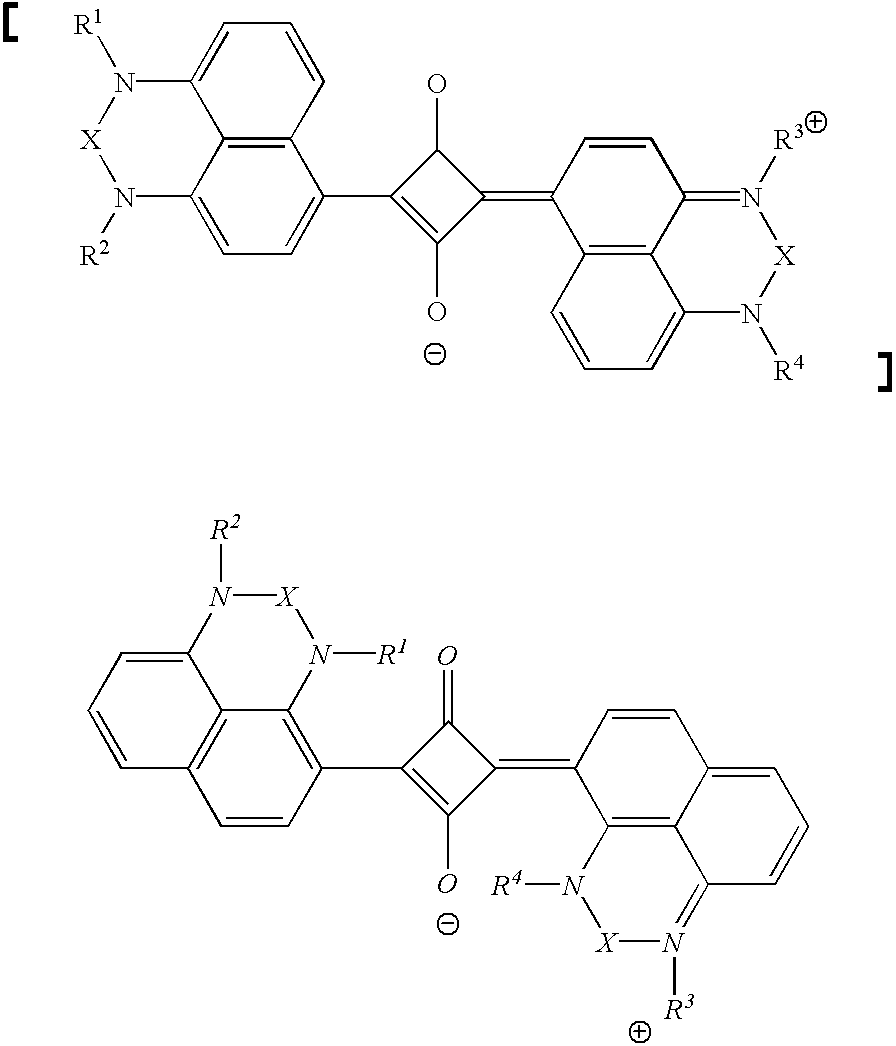Composition comprising photochemical acid progenitor and specific squarylium dye
a technology of acid progenitor and specific squarylium dye, which is applied in the direction of photosensitive materials, instruments, photomechanical equipment, etc., can solve the problems of dyes with oxidation potentials greater than about 500 mv and low sensitivity of this system, and achieve good acid generators
- Summary
- Abstract
- Description
- Claims
- Application Information
AI Technical Summary
Problems solved by technology
Method used
Image
Examples
example 1
A solution consisting of 2 g of 10% Novolak SD-126A (Borden Packaging & Industrial Products, Louisville, Ky.) in methylethylketone, 0.02 g of CYMEL 303 (American Cyanamid Co., Wayne, N.J.), 0.02 g TTT, and 0.003 g Dye 1a was coated with a No. 6 coating rod (R&D Specialties, Webster, N.Y.) onto 200 micron-thick grained and anodized aluminum printing plate base and dried with a heat gun.
A near infrared spectrum (integrating sphere) was taken of a sample of this coating when fresh and after 1 and 2 days at 60.degree. C. The results are given in Table 1.
A fresh sample of the plate and a sample aged 2 days at 60.degree. C. were scanned with the laser diode exposure assembly. Separate areas of the plate were scanned at a rate of 6, 8, and 10 revolutions per second (508, 678, and 848 centimeters per second, respectively). The scanned plates were heated for 60 seconds at 105.degree. C. and developed with PCX positive plate developer (3M, St. Paul, Minn.). For the fresh plate, the coating re...
example 2
Example 1 was repeated except that Dye 1e replaced Dye 1a.
A near infrared spectrum was taken of a sample of this coating when fresh and after 1 and 2 days at 60.degree. C. The results are given in Table 2.
A fresh sample of the plate and a sample aged 2 days at 60.degree. C. were exposed with the laser diode exposure assembly, heated and developed as in Example 1. Both fresh and aged samples left coating on the plate in the exposed areas at all scan rates of 6, 8, and 10 revolutions per second. In addition, there was no coating left in the unexposed areas. There were no signs of degradation of the coating after accelerated aging for 3 days at 60.degree. C. These results indicate that Dye 1e is more stable than Dye 1a in the presence of TTT. This may be due to the higher oxidation potential of Dye 1e (E.sub.1 / 2 =0.68 V vs SCE) relative to Dye 1a (E.sub.1 / 2 =0.51 V versus SCE).
TABLE 2 Absorption spectra of plates before and after accelerated aging at 60.degree. C. Dye .lambda..sub.max ...
example 3.0.00
Example 3. 0.006 g Dye 1a.
Example 4. 0.006 g Dye 1b.
PUM
| Property | Measurement | Unit |
|---|---|---|
| power | aaaaa | aaaaa |
| surface area | aaaaa | aaaaa |
| power | aaaaa | aaaaa |
Abstract
Description
Claims
Application Information
 Login to View More
Login to View More - R&D
- Intellectual Property
- Life Sciences
- Materials
- Tech Scout
- Unparalleled Data Quality
- Higher Quality Content
- 60% Fewer Hallucinations
Browse by: Latest US Patents, China's latest patents, Technical Efficacy Thesaurus, Application Domain, Technology Topic, Popular Technical Reports.
© 2025 PatSnap. All rights reserved.Legal|Privacy policy|Modern Slavery Act Transparency Statement|Sitemap|About US| Contact US: help@patsnap.com



